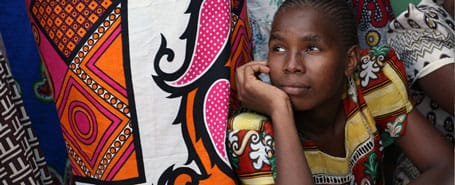Women & HIV/AIDS

HIV/AIDS is one of the greatest threats to women’s health.
Every day, more than 1,800 women around the world acquire HIV.1
In sub-Saharan Africa where the epidemic has hit hardest, HIV is spread primarily through heterosexual sex, and women (during vaginal sex) are more likely to be infected than men. In the region, 63% of all new HIV infections in the region occur among women and girls.2
HIV/AIDS is one of the leading causes of death for women of reproductive age (15-49) worldwide.3
HIV/AIDS is also one of the leading causes of death for pregnant women and mothers in developing countries, and is a major barrier to global efforts to reduce maternal mortality.4
Why are Women and Girls More Vulnerable to HIV?
Biology: Biologically, women are more likely than men to acquire HIV during vaginal intercourse. Adolescent girls, whose reproductive systems are not fully developed, are especially susceptible to becoming infected during sex.
Globally, young women ages 15-24 are twice as likely to be living with HIV as young men of the same age. In sub-Saharan Africa, young women are more than three times as likely to acquire HIV as young men.5
Gender inequities: This is often compounded by cultural, legal and political factors that impede a woman’s ability to protect herself from HIV.
Due to these disparities, many women and girls are often unable to control when or with whom they have sex, or to persuade their husbands or partners to use condoms. Neither option is realistic for women who are at risk of sexual violence or who would like to have children.
Marriage is often no protection. Many new HIV infections occur in women who are married or in long-term relationships with one partner. In Kenya, many more married and widowed women are living with HIV than those who have never been married.6 In Zambia, married or cohabiting people are estimated to account for as much as 60% of new HIV infections.7
Microbicides Could Help Empower Women Against HIV/AIDS
Overcoming these challenges requires giving women everywhere innovative, self-initiated tools like microbicides to protect themselves and their families against HIV/AIDS.
Notes
1 UNAIDS, July 2021 Core Epidemiology Slides, 2021
2 UNAIDS, "Fact sheet 2021", 2021
3 UNAIDS, "We've Got the Power: Women, Adolescent Girls and the HIV Response,” 2020
4 Hogan M. et al. “Maternal mortality for 181 countries, 1980–2008: a systematic analysis of progress towards Millennium Development Goal 5,” The Lancet 375 (2010): 1609-23
5 UNAIDS, AIDSinfo database. http://aidsinfo.unaids.org, accessed August 30, 2021.
6 UN General Assembly Special Session on HIV/AIDS, “Country Report — Kenya,” 2010
7 UNAIDS, "Report on the Global AIDS Epidemic,” 2010